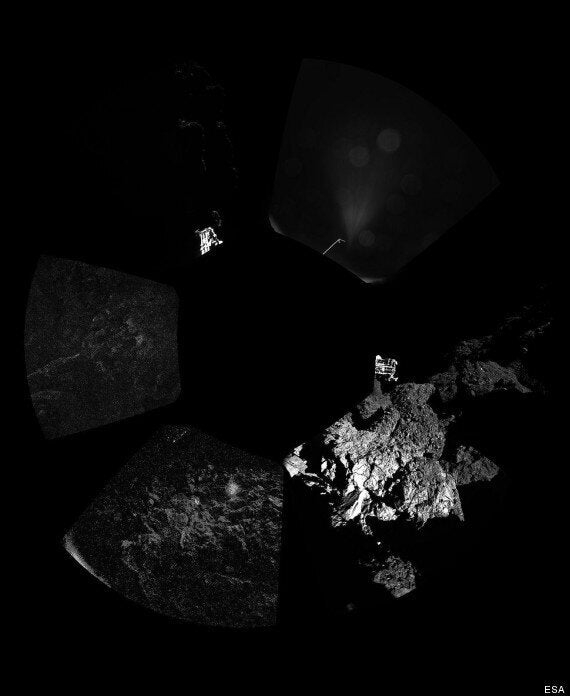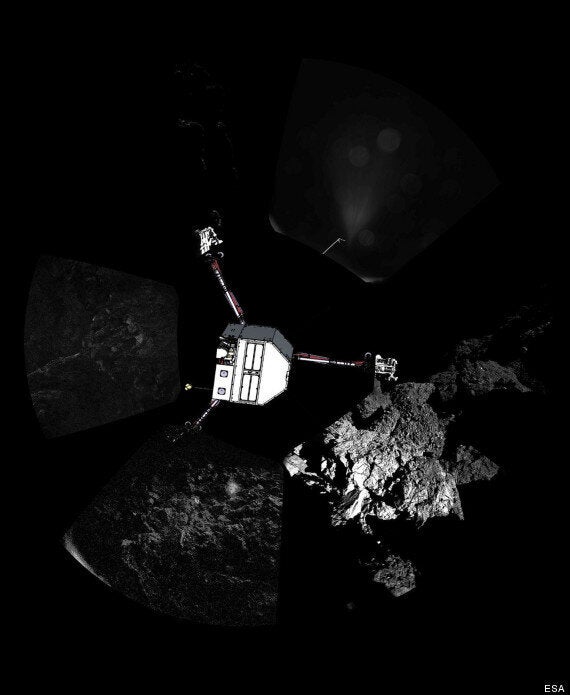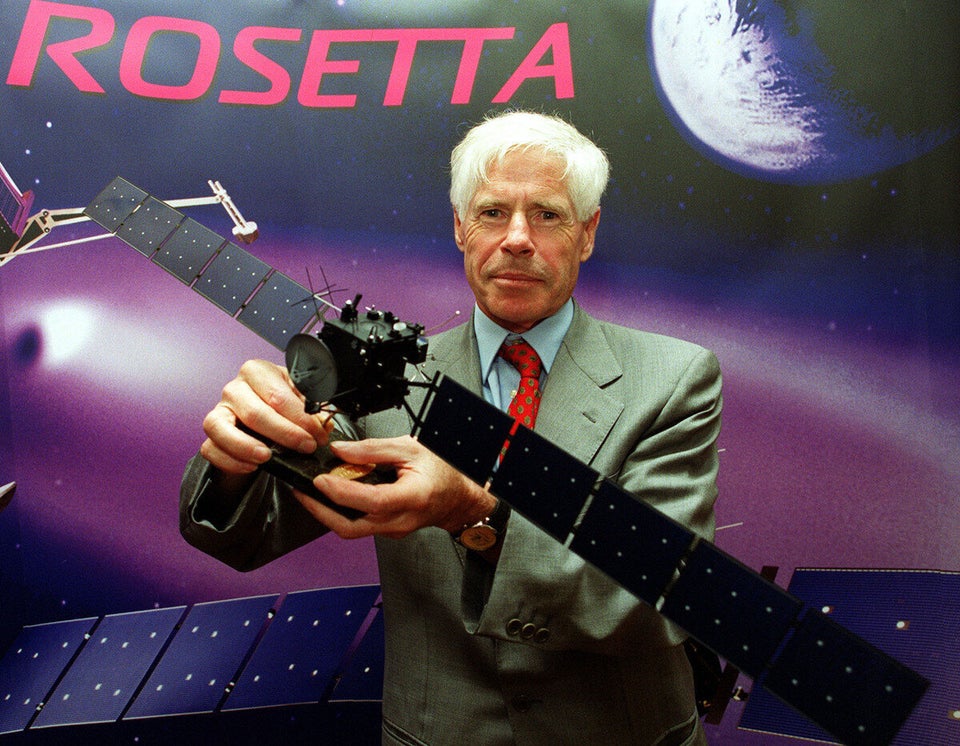The European space craft which landed on a comet on Wednesday bounced after touchdown, and flew more than a kilometer before landing again, bouncing a third time and finally coming to a halt.
Now researchers are trying to work out where the lander is - and what kind of science they can do until its power runs out.
ESA said in a press conference that the lander is currently balancing on two feet, with one foot in open space. It may try in the coming days to reorient the lander so that all three feet are stable on the surface.
But it is still unclear where the lander actually is, and exactly how it got there.
The lander is lying deep in a shadowy cliff edge, and is receiving less solar power than ESA was hoping for.
Here is the latest image of the lander - it's a before and after so you can see where the lander actually is.


The first jump after the rover landed lasted about two hours, having raised at a rate of about 38 centimetres per second. It rose about a kilometre and then fell, and rose again for seven minutes before landing for a third and final time.
ESA also produced an animation of Philae descending to the comet.
Other things we know so far include:
- Philae bounced more than 1,000 metres after its initial landing, because planned systems to keep it in place - harpoons, ice screws and a thruster - did not work.
- Philae landed on the core of the comet, an area not photographed in detail.
- There is just 1-2 hours of sunlight a day in the spot where the lander now is, meaning it will lack for power until at least a few days' time.
- Drilling is currently on hold because there is just 50-55 hours of battery time.
- The probe was gathering data all the time it was bouncing.
- It's not on hard ground with about 30cm of dust.
- Solar panels are working, radio is working.
Dr Daniel Brown, an astronomy expert at Nottingham Trent University, said:
“Philae has been on the comet for just one day, but the sense of tension and awe it has created has been remarkable. It is a huge relief to hear that Philae is still functioning and gathering data and images. The amount of emotion we have seen from the team since the landing shows that science does not come from the head alone, but from the heart and soul too. Space and planetary exploration is touching the very core of what we are about, challenging the impossible and shedding light on the unknown. One look at the images sent back from Rosetta and Philae confirm this.”
